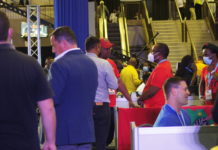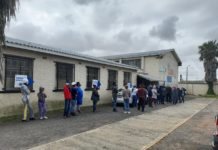In July 1995, Bosnian Serbs entered the town of Srebrenica. They rounded up the men and teenage boys from the town, and shot them dead. Some 8,000 people were murdered over two days in what is Europe’s biggest atrocity since World War II. Thousands of families lost all their male relatives. Nazira Sulejmanovia lost two sons, her father, her brother and many cousins in July 1995. ALMA BRNICANIN spoke to her about her journey since the events of 20 years ago.
The last time I saw my sons was on 11 July 1995.
When we finally heard of Srebrenica’s fall, we all started fleeing towards the Dutch battalion in Poto?ari (UN peacekeepers), who were in charge of protecting the town.
My one son Å eval, who was 17 at the time, tried to flee on a horse while Å emsudin (21) stayed at home. He insisted (on) gathering memories.
We were on our way but he was busy breaking the picture frames. I called out to him to join us and he said to me: “I want to save them as keepsakes, Mum.”
I had to leave with my four-year-old daughter. I never saw him again.
In all, I lost my two sons, my father, my brother, and so many cousins.
At the time, we had been living in the safe zone and we trusted the United Nations, who were supposed to be here to protect us. I was working for the army and so were my sons. The UN knew that Srebrenica was being taken over and still they were taking away our arms. When the Dutch (peacekeepers) would spot our weapons, they would run after us to seize it.
Eleven years ago, we buried three excavated bones that belonged to my Å eval. My older son Å emsudin was buried five years ago. To bury them meant peace of mind.
I blame the UN for the fall of Srebrenica, for they deprived them of arms and weapons.
Three bones of my younger son had been found and I waited for three more years for a few more to be discovered in order to bury him.
After what happened in Srebrenica, I fled to the town of Tuzla in north-eastern Bosnia. I returned to Srebrenica seven years ago and I built my a house on a hillside over the Poto?ari Memorial Cemetery, where my sons are buried.
Almost every other day, I visit their graves.
I take them roses and lilies. They loved flowers. And I sit there between the two graves and imagine “these are not just three bones, but it’s a whole body”.
For me, finding even just one bone comes as a sigh of relief.
We were not able to find even one bone belonging to my brother.
My place is here, my bones are here.
You see, they were collected from the mass graves and they returned where they came from.
I would say that Srebrenica is the leader in one aspect, that is, in the number of graves; it is a town with as many tombstones as people.
I will never forget. I also keep telling my grandchildren: “Never forgive; never forget; but do not display hostility either.”
Editor’s Note: The International Criminal Tribunal for the former Yugoslavia and the International Court of Justice in The Hague have ruled that this mass crime, where more than 8,000 Bosnian Muslims were killed, amounts to genocide. The Bosnian war lasted between 1992 and 1995 and about 100,000 people lost their lives. At Srebrenica, about 8,000 people were killed. Of these, 6,377 bodies have been reburied and more than 1,300 others are still to be found.











